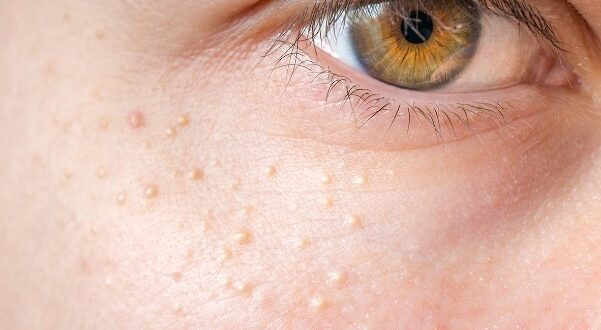Understanding Milialar: Your Comprehensive Guide to Skin Bumps

Milia, a common dermatological condition, often referred to as “milialar,” are small, benign cysts that appear on the skin. These tiny, dome-shaped bumps might seem concerning but are generally harmless. Despite their harmless nature, they can be bothersome, affecting one’s appearance and self-confidence. Understanding milia, its causes, symptoms, treatments, and preventive measures is essential for managing this condition effectively.
What Are Milia?
Milia are small cysts filled with keratin, a protein found in the outer layer of the skin. They usually appear as white or yellowish bumps, typically on the face, around the eyes, cheeks, and nose, but can also occur on other parts of the body.
Symptoms and Causes
Milia are often associated with:
- Keratin Trapped Under the Skin: When dead skin cells get trapped beneath the skin’s surface, it can lead to the formation of milia.
- Skin Trauma: Injuries to the skin, such as burns or rashes, can result in milia.
- Use of Heavy Skincare Products: Certain heavy or oily skincare products can clog pores, contributing to milia formation.
- Sun Damage: Prolonged exposure to the sun’s harmful rays can increase the likelihood of developing milia.
Types of Milia
There are several types of milia, categorized based on their causes and where they appear:
- Primary Milia: Common in infants and adults, these form without a clear cause.
- Secondary Milia: Resulting from skin damage or trauma, such as burns or blisters.
- Neonatal Milia: Often seen in newborns, these usually disappear on their own.
Who Is Affected by Milia?
Milia can affect people of all ages and backgrounds, from infants to adults. While they’re harmless, they might impact an individual’s confidence, especially when they appear prominently on the face.
Treatment Options
Treatment for milia varies based on the individual’s age, the type of milia, and the location of the cysts. Some treatment options include:
- Exfoliation: Gentle exfoliation may help remove dead skin cells and prevent milia formation.
- Topical Retinoids: Dermatologists might recommend creams containing retinoids to help unclog pores.
- Lancing or Extraction: In some cases, a dermatologist might use a sterile needle or lancet to remove milia.
Skincare Products and Prevention
Choosing the right skincare products can play a vital role in preventing milialar formation. Opt for non-comedogenic products that won’t clog pores. Regular cleansing, exfoliation, and moisturizing can also help maintain healthy skin and reduce the risk of milia.
When to See a Dermatologist
If milia persist or cause discomfort, seeking advice from a dermatologist is advisable. They can provide professional guidance and recommend appropriate treatments based on individual skin types and conditions.
Lifestyle Changes and Home Care
Adopting a healthy skincare routine and lifestyle habits can contribute to managing and preventing milia. Protecting the skin from excessive sun exposure, eating a balanced diet rich in vitamins and minerals, and staying hydrated are all beneficial.
The World of Milia: A Global Perspective
Milia are a worldwide occurrence, affecting individuals across different regions and cultures. While their impact might be similar, the approach to treatment and management may vary based on local practices and available resources.
Research and Development in Milia Treatment
Continued research in dermatology explores innovative ways to treat and manage skin conditions like milia. Scientists are continually investigating new products, procedures, and therapies to provide more effective solutions for individuals affected by such conditions.
Conclusion
Milia, though often harmless, can impact an individual’s confidence and skincare routine. Understanding the causes, symptoms, treatment options, and preventive measures is crucial in managing this common skin condition. With the right approach, skincare regimen, and guidance from dermatologists, individuals can effectively address milia and maintain healthy, glowing skin.







